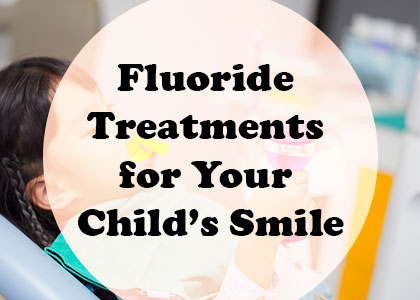Is Fluoride Safe for Kids?
Posted on May 27th, 2021
 At Veranda Dentistry, we know that Des Moines parents work hard to prioritize their child’s health and happiness—you can count on us to do the same! The smiles of your children are a contagious expression of delight, and our role as their oral healthcare provider is to protect those precious pearly whites.
At Veranda Dentistry, we know that Des Moines parents work hard to prioritize their child’s health and happiness—you can count on us to do the same! The smiles of your children are a contagious expression of delight, and our role as their oral healthcare provider is to protect those precious pearly whites.
That’s why we fill Des Moines parents in on the ways we can help prevent their child from experiencing the pain of cavities. Fluoride treatments are a quick, painless way to strengthen teeth and keep decay-causing bugs away.
Are Fluoride Treatments Safe for Children?
Yes! They are an especially important prevention method in communities that don’t have fluoridated tap water. When combined with dental sealants, fluoride treatments have a 95% success rate in cavity prevention.
The reason fluoride is one of the main ingredients in toothpaste and offered as varnish is because of its ability to prevent cavities by making the hard, outer shell of teeth less susceptible to the acid erosion caused by sugars and plaque bacteria in the mouth. Fluoride treatments have even been found to reverse early dental decay in some cases.
We know there’s a lot of information floating around about the dangers of fluoride, which should not be ignored. It is true that fluoride is a known neurotoxin, but only when ingested in large quantities. The small amount of fluoride found in toothpaste and drinking water should be no cause for concern, especially since the research shows such a strong correlation between fluoride and cavity prevention.
What is the Fluoride Treatment Process?
Professional fluoride treatments can be applied in a gel, foam, or varnish form. The varnish application is fast, with a very small, thin layer of concentrated fluoride being applied. Most dental offices have different flavors for kids to choose from like strawberry, mint, or bubblegum.
After the treatment is complete, Veranda Dentistry may advise your child not to eat or drink anything for 30 minutes. Once they do resume eating and drinking, it’s best to choose soft foods at a lukewarm temperature and a neutral beverage like water.
You’ll also want to wait at least 6 hours before letting or helping your child floss and brush. The varnish may leave a stained appearance on your child’s teeth, but this is only temporary! After a good brushing, they should look the same as they did before treatment.
Fluoride treatment can be applied 2-4 times a year, depending on your child’s needs. Each treatment should last for several months. Keep in mind that fluoride treatments and dental sealants are backup when it comes to cavity prevention.
Your child’s dental health is best protected with great oral hygiene—this means flossing and brushing twice a day, just like the adults do (with help as needed). You may think they can take it easy because baby teeth go bye-bye anyway, but the health of those baby teeth is critical to ensure their health and happiness as they grow.
Don’t Let the Cavity Bugs Bite
Tooth decay is the #1 most common chronic childhood disease, but it’s one that can be prevented with diligence. Children suffering from cavities are three times more likely to miss school, and we know Des Moines parents don’t want their young one’s educational and social development to be delayed or difficult in any way.
Veranda Dentistry is here to help teach your little ones the importance of caring for their smiles, and to make it a rewarding activity! Please don’t hesitate to contact us at Veranda Dentistry with any questions, or to schedule a visit. We love to see each member of the family in our dental chair!
The content on this blog is not intended to be a substitute for professional medical advice, diagnosis, or treatment. Always seek the advice of qualified health providers with questions you may have regarding medical conditions.


